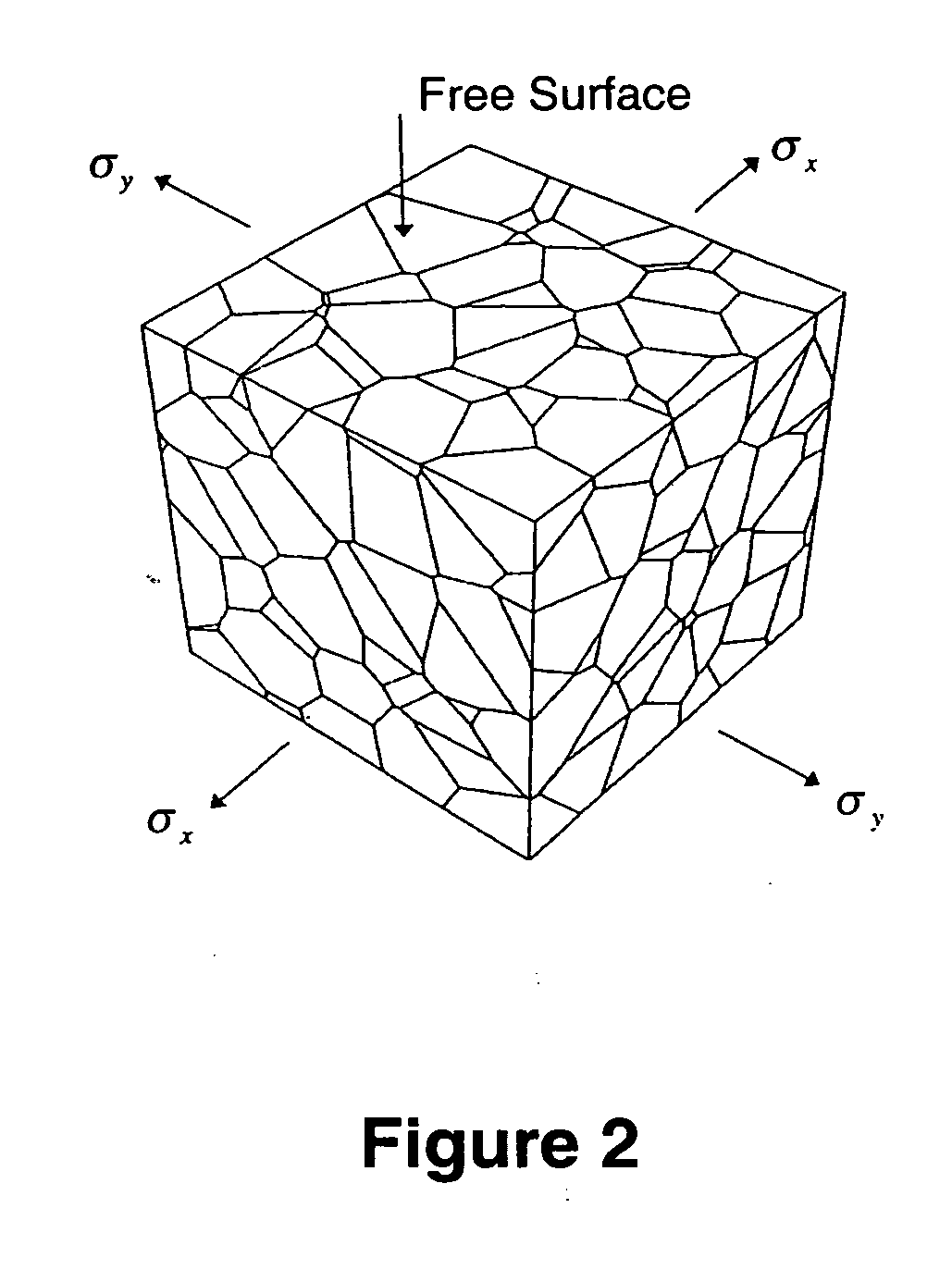Method and apparatus for predicting the failure of a component
a technology of failure prediction and component, applied in the direction of stochastic cad, cad techniques, instruments, etc., can solve the problems of safety factors adding unnecessary redundancy, weight, cost to a component, and affecting the reliability of components,
- Summary
- Abstract
- Description
- Claims
- Application Information
AI Technical Summary
Benefits of technology
Problems solved by technology
Method used
Image
Examples
example 1
[0071] The following example applies the method of the present invention to a γ prime-strengthened nickel superalloy to derive a microstructure-based fatigue failure model and is illustrated by FIGS. 7 and 8. It also reflects the numbering and methods of FIGS. 3(a)-3(e) throughout. The example is applicable to the general class of nickel superalloys. The discrete microscopic structural elements of a material were identified 1 through literature search 4 and direct microscopic observations 5. Through literature search 4 it was determined that the alloy was face center cubic single phase with polycrystalline grains. For this example, no direct observations of specimen samples 5 were required. Information in the literature was used to estimate the statistics defining the geometry of the microstructure 6 as characterized 7 by the values in Table 1 for the grain diameter, slip orientation of surface grains, and slip orientation of interior grains.
TABLE 1Characterization of the physical...
example 2
[0093] The following example applies a preferred embodiment of the method of the present invention to predicting fatigue failure of a bolt hole using probabilistic microstructure-based models using Finite Element Method (FEM) results. It reflects the numbering of FIGS. 3(a)-3(e) throughout and is further illustrated using FIGS. 9-13. This example illustrates the development of methods to model geometrically complex components with complex stress distributions and predict the failure of the component. The output from typical FEM analyses are used to find the elastic global stress at each node 50 of the FEM model. The macro-stress does not consider any microstructural interactions as opposed to the microstress that is the stress caused by the interaction of the microstructure. A representative volume (or surface area) element (RVE) is determined for each node 54. The RVE grid is different from the FEM grid. Actually, not all nodes of the FEM model need be considered. The RVE developme...
example 3
[0106] The following example illustrates a preferred embodiment of the method of the invention that uses probabilistic microstructure-based models using FEM results to large RVEs. The example is further illustrated by FIGS. 10, 14, and 15. The probabilistic microstructure fatigue model evaluates the fatigue resistance of each nucleation site of the RVE. A large structure such as a bridge could easily have very large RVEs that could have more than 1010 nucleation sites. If, during the fatigue simulation, we wish to consider thousands of structures, the number of nucleation sites to consider becomes large and the computational time can become significant. In this example, we will extend the concept of the extreme value statistics to fatigue of large RVEs.
[0107] Consider a large RVE that has a fatigue response controlled by transgranular (non-defect) crack nucleation. The fatigue response of the structure is an extreme value problem because the grain that nucleates a crack and grows t...
PUM
 Login to View More
Login to View More Abstract
Description
Claims
Application Information
 Login to View More
Login to View More - R&D
- Intellectual Property
- Life Sciences
- Materials
- Tech Scout
- Unparalleled Data Quality
- Higher Quality Content
- 60% Fewer Hallucinations
Browse by: Latest US Patents, China's latest patents, Technical Efficacy Thesaurus, Application Domain, Technology Topic, Popular Technical Reports.
© 2025 PatSnap. All rights reserved.Legal|Privacy policy|Modern Slavery Act Transparency Statement|Sitemap|About US| Contact US: help@patsnap.com



